Last Updated on June 29, 2022 by Rebecca Huff
Several things hinder many folks from prioritizing environmental issues such as waste reduction. Let's look at a few of these reasons and try to see from a different perspective.
Reason 1: I don't have time or money to go green
Look, I get it, and I can relate. Just because I write about going green doesn't mean I am executing everything perfectly. The struggle is real for me too! When I write about reducing waste, going green, recycling and such, people tell me that it takes too much effort in a world where we are all too busy.
And the guilt…let me clarify, I am not judging you, it's not my place to do so. This article is meant to inform and motivate. Caring for the environment is an emotionally complicated issue. It is not my place to judge anyone, yet I do feel called to educate.
My kids and I know first hand how overwhelming it can be to do our part in protecting the environment. At times it feels like we aren't doing enough or that there's just no way to do all the things we'd like to do. It does not have to be this way; we can make changes that will have a positive impact without stressing.
All we need is the know-how and a change in mindset.
Simple swaps for waste reduction
Paper towels vs. cloth
Buying a pack of inexpensive cotton cloths one time, washing them once per week is not so much more time consuming than using paper towels. The latter involves driving to the store, paying for a giant package of individually plastic wrapped rolls of paper towels, lugging them home, storing them, tossing them in a plastic garbage bag which you also pay for, paying for garbage pickup and so on.
You don't have to buy fancy unpaper towels unless you want to. Cheap cotton washcloths work just fine.
Disposable razors vs. stainless steel safety razor
Take a moment to think about disposable razors. Over 2 billion disposable razors are tossed in the US alone. Single-use items that have replaced perfectly good multiple use products are a great place to start reducing waste. I recently swapped mine and had a friend ask me about it after I shared on Snapchat. I sent her the link to purchase one to which she replied “too expensive!”
One reusable razor plus enough blades for a new blade every week for a year costs $62 on Amazon. Compare that with the price of disposables ranging from the cheapest to the most expensive. You are looking at anywhere from $100 – $250 per year in disposables. With a reusable, the second year will only cost about $22 if you change the blade every week. Over the course of 5 years you could save around $725.
[Tweet “Ditching disposable razors could save you around $725 over five years. #zerowaste”]
Setting aside the monetary cost, think of all the space saved in landfills if you do not toss all those disposables!
When I told my mom I had made the switch she text me, “Be careful!” It seemed like a scary thing to do, shaving with a single blade razor, even though it is a safety razor. Guess what; I have not cut myself yet! With the new shaver, I no longer get razor burn and ingrown hairs as with a disposable. The shave feels smooth and close; I have yet to see the downside.
Plastic straw vs. Glass or Stainless Steel Straws
Another simple swap for waste reduction is skipping the plastic straw and just drinking straight from the cup. If you're a die-hard straw fan, try stainless steel or glass straws. In America, we use 500 million plastic straws daily.
According to the National Park Service, our straw problem would fill over 125 school buses with straws daily. In other words, 46,400 school buses full of straws per year. Do you recycle your straws? Neither did I. Recycling centers typically don't have straw recycling because they get stuck in machinery.
So we're talking about 500 million pieces of plastic going in the trash on a daily basis. Personally, I find this mind-blowing. The plastic never entirely breaks down, and when it does, the smaller pieces end up contaminating waterways and other wildlife.
Waste Reduction and Your Dollars at Work
In many instances, reducing waste is more cost-effective. For example in the above instance where I explained how using disposable is not the best choice when it comes to your budget.
The mindset of waste reduction isn't just swapping out plastic for better options; it is also about not consuming so much. The goal isn't just to recycle, but to actually use less. We live in a consumer driven society, so minimalist thinking goes against the grain. It takes a bit of effort not to make mindless purchases on Amazon just because you can.
The best way to practice waste reduction is not to create it in the first place. Not creating waste saves money. Reducing waste is not about making your own homemade laundry soap or canning food all summer long. It's about simplifying.
Think about it like this; in a world where most of us are comparing up, waste reduction encourages you to compare down. Instead of seeing those who have more than us, try noticing those who have less and are still happy.
Reason 2: I'm a Christian, I worship the Creator not the creation
Yes, it has been said that caring about the environment distracts a Christian from focusing on other “more important” moral issues.
Christians, Environmentalism, Politics and Creation Care
Many Christians are under the impression that caring about the earth is contrary to Christianity or else do not want to be labeled as a “tree-hugger.” Many believe “going green” is all about environmentalism and politics. I disagree. Genesis 1:31 says “And God saw everything that he had made, and, behold, it was very good.”
You can care about sustainability and the environment and not glorify “Mother Earth” all the while maintaining your belief in God.
Sadly, many Christians are not at all concerned about the earth because of the belief that “all things will pass away.” As a Christian, none know when the end will come; if you have children, they are going to need resources to survive if the “end” doesn't come during their lifetime.
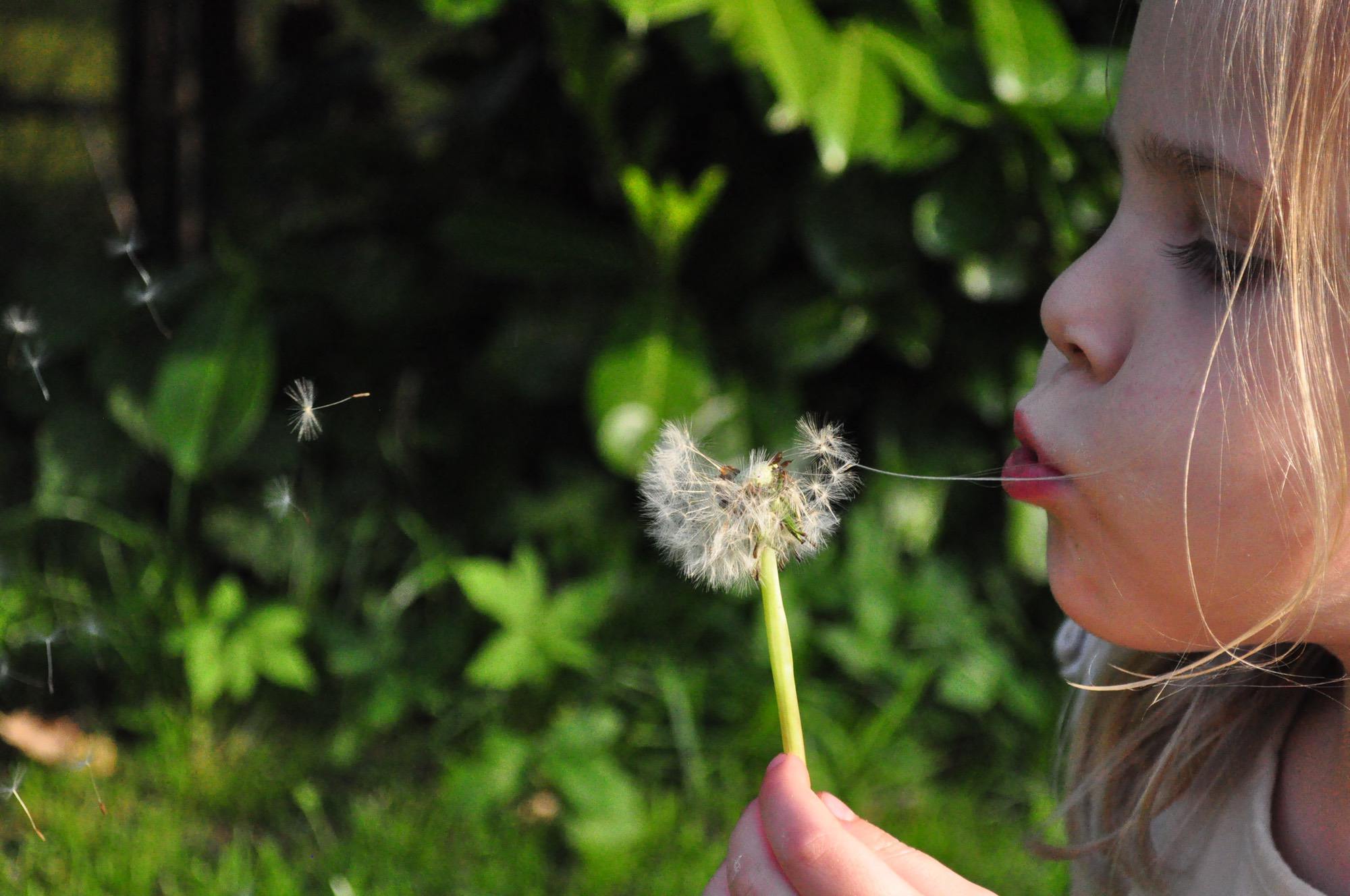
The idea is not to worship the earth, but to preserve it for future generations. That is the definition of sustainability ~ “meeting the needs of the current generation without diminishing the ability of future generations to meet their own needs.” (1)
Creation care is not only a lifestyle choice but also a spiritual issue. In fact, God gave humans the RESPONSIBILITY to rule over the fish in the sea and the birds in the sky, over the animals and all that is on the earth.
It is easy to ignore the environmental problems around us and focus on other moral issues instead; especially since most ecological subjects rarely come up in the church. Why can't we care about both issues?
[Tweet “The idea is not to worship the earth, but to preserve it for future generations.”]
Natural Revelation – God's signature is hidden behind the smog
Decades ago a popular song by Steve Green was one of my personal favorites. The lyrics explain how people from every nation and culture wonder how they can believe in a God that is not visible with the eyes. The answer? It's written all across the sky…
All across the world
People everywhere
Ask “How can I believe in a God I cannot see?
If there really is a God, why is there so much pain?
If I could only see, then I’d believe.”
If you could only see that HisLove is written all across the sky
As brilliantly the stars all testify
For the glory of the God Who reigns on high
Is displayed in the world He has made
And as all creation seems to shout and sing
In wonder of the one Almighty King
His signature can easily be seen on everythingSteve Green Ministries ©
But what if there is so much pollution in some nations that people literally cannot see the sky? Or there is so much light pollution that a person in the city has never seen the stars?

“Theologians have often argued that the splendor and wonder of creation — Natural Revelation — is observable proof of God and God’s awe-inspiring power. But what happens when it’s not visible? What are the spiritual ramifications of destroying our world?
The concept of Natural Revelation is often taught from a privileged and Westernized perspective, where scenes of picturesque mountain ranges, pristine lakes and rivers, beautiful wild animals, and lovely plants are used to portray the sheer majesty of God.
For many of us, this is an easy reality to absorb because we love nature and have access to the outdoors, scenic parks, and unpolluted land. But for many around the world, the idea of Natural Revelation is absurd, and often a theological idea that actually argues against the existence of a God.
Because when water is too unsafe to drink, air too toxic to breathe, and the sheer decay of the surrounding environment endangers you and your family — how is God glorified? When the natural physical existence around you is taken away, broken, or heading toward death instead of life, how does this possibly point people to God?
The sad reality is that Natural Revelation — as we interpret it to be — doesn’t really exist for millions of people living in conditions where their environment is being exploited for corporate and political gain.
The Bible says that the skies declare God’s craftsmanship, but what happens when people can’t see the sky due to smog and waste?” (2)
Reason 3: It doesn't affect me right now
Most of us tend to focus on the immediate problems in our lives instead of the ones that will creep up on us at some undetermined time in the future. I believe this is one of the top reasons why many people do not take action on issues like waste reduction.
What you can't see can hurt you. Just because you do not see the polluted air in your home isn't an indication your air is clean. Even though you aren't swimming among plastics when you visit the beach doesn't mean the fish are swimming in clean water.
Even if you can look out your window and see a beautiful bucolic setting, you may be exposed to acid rain, water pollution, air pollution. (3)
Turning the ocean into plastic soup
The Great Pacific Garbage Patch is a collection of plastic debris in the North Pacific Ocean from discarded trash hundreds of miles away. Primarily, this debris accumulates because plastic is not biodegradable; instead, it keeps breaking down into smaller pieces called microplastics. This Garbage Patch does not look like a giant landfill in the ocean, but rather a cloudy soup in the water. (4)
A mixture of plastic bags, bottle caps, water bottles, styrofoam cups, fishing nets, shoes, even computer parts makes up the Garbage Patch. All of this debris can be very harmful to marine life such as sea turtles who mistake the plastic for jellyfish and seals which get tangled in the discarded fishing nets. The debris is also putting fish, seabirds, whales, and dolphins at risk. You can read more about it from links in sources at the bottom of this post. (5)

You may think this does not affect you. However, the entire food web could change due to the trash blocking sunlight from reaching plankton and algae. If threatened, the small fish that feed on them will have less food causing a decrease in their population, which would also mean less food for larger fish like tuna, making seafood scare and driving up the cost.
Can we eliminate plastic?
Cleaning up all this plastic debris is not easy. The size of the ocean alone makes this task incredibly time-consuming. Experts agree that limiting or eliminating our use of disposable plastics and increasing the use of biodegradable products is the best alternative. There is more than one garbage patch in the oceans; you can read more about them on National Geographic.
We will likely never eliminate plastics entirely as they are highly beneficial in certain circumstances such as the medical industry. However, 50% of plastics are used for disposable products and discarded within a year of purchase. We can move towards plastic waste reduction and work at recycling the plastic we choose to keep in our lives. (5)
Reason 4: My contribution won't change much
This is faulty thinking at it's worst. Take it easy on yourself and acknowledge that thinking about these issues is overwhelming. Know that you are not the only one, there are countless other people doing their one or two things to make a change and when we add them all up it is a big contribution.
I am only one. I cannot do everything, but still I can do something; and because I cannot do everything, I will not refuse to do something that I can do. ~Helen Keller
Many times when we talk with our children about the environment, animals at risk, and other scary issues they might feel fearful. It's best to focus on the positive side when making a change. We can explain that if we drink from glass water bottles, less plastic will end up in the ocean, so the marine life will have a cleaner home.
I bet you've taught your children to pick up their trash when you take them to the beach. That makes a huge difference. Teaching our kids to care about waste reduction and creation care is making a huge contribution to the environment.
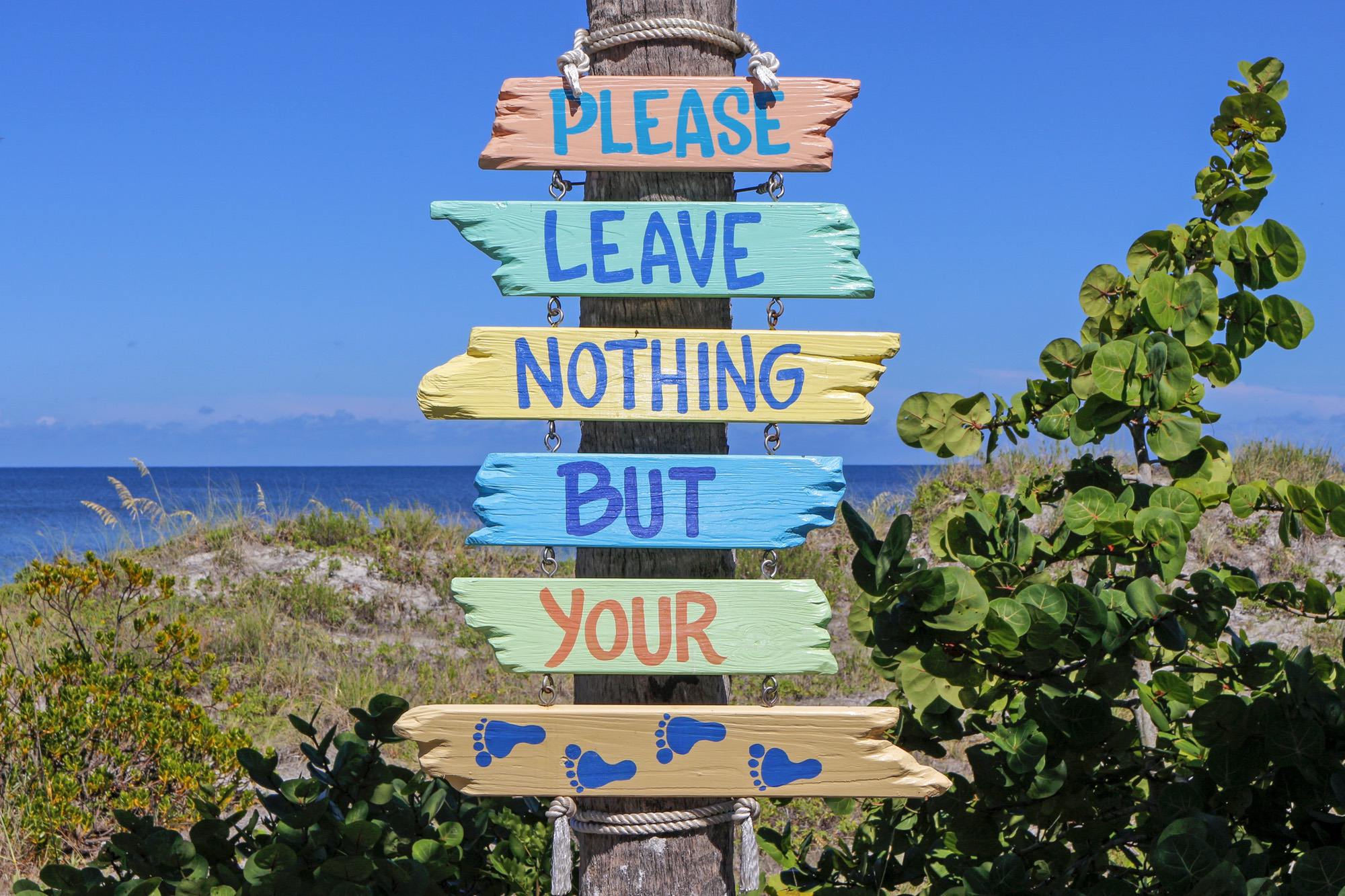
Ideas for change
Maybe you can't do everything on this list, perhaps you could pick one or two suggestions to work on every season change?
Know the R's: Reduce, Reuse, Recycle, Refuse, and Rot
- In the case of rot – compost your banana peels, avocado pits, eggshells, and coffee grounds. Composting can be an exciting and educational family project that will reward you with abundant soil to use in planting. You can also giveaway your compost, believe it or not!
- Install motion sensor light switches in case your family members just can't get the hang of flipping off the light switch. We have these in our laundry room. Not only does it save money because the lights go out when there is no movement, but it also saves me trying to flip the switch when I have my hands full of clean laundry!
- To reduce the amount of plastic you toss, buy a reusable water bottle and carry it everywhere you go.
- Reduce the amount of water you use by checking for leaks, installing faucet aerators, turn the water off while brushing your teeth, learn to use grey water, catch rainwater for watering plants and gardens if it is legal in your state.
- Reduce wasted energy in simple ways such as matching your pot to the burner size to reduce lost energy heating. Try to keep your freezer and refrigerator stocked, so it runs more efficiently. Pressure cookers use less energy than crock pots, and hey, they are all the craze lately.
- Recycle items correctly; this is a great job for kids. Find out what your city recycles and start separating it from your everyday trash. Either take it to the recycling center or have it picked up if that option is available where you live.
- Know HOW to recycle specific items. When it comes to glass, rinse before tossing it into the recycling bin.
- For plastics, know your numbers, read Plastics by the Numbers. In this article you can learn all about what those numbers mean, “#7 plastics are not for reuse, unless they have the PLA compostable coding. When possible it is best to avoid #7 plastics, especially for children’s food. Plastics with the recycling labels #1, #2 and #4 on the bottom are safer choices and do not contain BPA. PLA coded plastics should be thrown in the compost and not the recycle bin since PLA compostable plastics are not recyclable.”
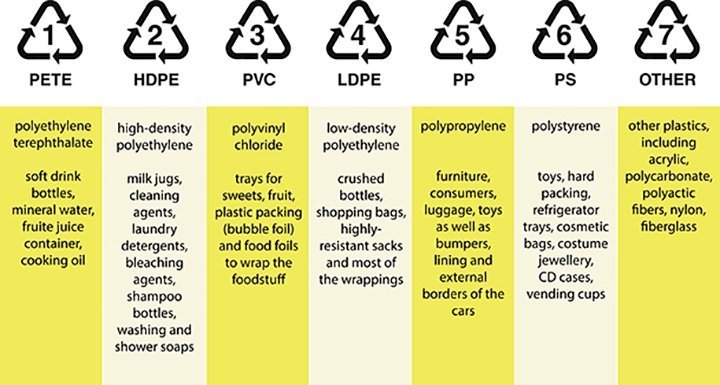
- Use beeswax wrap instead of plastic wrap and sandwich baggies. Make your own with my how-to video tutorial or if you prefer you can buy Beeswax wrap already made. Salad in a jar is also very trendy right now!
- Buy items in bulk as often as possible, save jars and other containers to carry bulk items home in. Take your container to the store and weigh it for the tare so the cashier can deduct the weight of the container when checking you out.
- If possible buy other items in bulk to cut down on the packaging
- When purchasing bulk is not an option, choose products in paper bags or glass instead of plastic wrapped products.
- Switch to loose leaf tea instead of bags, especially those which are also individually wrapped in plastic.
- Buy produce without plastic wrap around a foam tray, loose fruits and vegetables in their original protective wrap (the peeling) is best.
- If you eat meat, consider buying from a local farm or a butcher, they often use butcher paper instead of plastic.
- Instead of single-use coffee, use a French Press or a Chemex with a reusable filter. A reusable organic cotton coffee filter will last over a year and will replace around 500 paper filters. It's simple to rinse and hang to dry, plus I love the way mine feels and looks. The Coffee Sock (which is what I use) is made from GOTS certified Organic cotton right here in the USA! You could also cold brew your coffee with the cold brew coffee sock kit.
- Refuse samples and goodie bags when possible.
- Refuse plastic straws with drinks.
- Bring your own refillable coffee mug to the coffee shop!
- Carry reusable grocery bags with you so you will not have to use paper or plastic at the supermarket.
- Use matches instead of plastic lighters.
- Make homemade cleaners in glass bottles and skip plastic if possible.
- Use essential oils instead of air fresheners, which are also toxic.
- Take care of the things you currently have, repair if possible, if you look on youtube you will find a video for just about anything you want to fix.
- Instead of tossing items while they still have usability, donate them. Americans throw away 81 pounds of clothing per year.
- Clothing that is too worn or stained to be donated can be used as rags instead of paper towels. It is not hard to do, just rip them up and store them till they are needed.
- Concerning clothes, also consider purchasing clothing second hand.
- Carry reusable utensils (I carry a bamboo spork) and a reusable container for carryout. My daughter Macey carried reusable chopsticks when we went to China!
- Consider stainless steel or glass straws instead of plastic straws which almost all end up in the landfill.
- Buy wooden or bamboo beauty tools such as a brush with a wooden handle. Use tweezers made of metal instead of plastic.
- Choose beauty products in glass or biodegradable packaging and reduce how many different types of products you consume. Ask yourself, “is this item essential?” A good example is shaving cream in plastic tubes or bottles; coconut oil is excellent for shaving. Not only does it moisturize but it is also anti-fungal, anti-bacterial, and antiviral which helps cut down on problems when shaving. Using coconut oil to shave my underarms is part of how I quit using deodorant.
- Speaking of shaving, using a stainless steel safety razor beats the disposable plastic razors in many ways! Not only do they create less waste, but they also give a higher quality shaving experience!
- Think about using the oil-pulling method of cleaning your teeth followed by a brush with baking soda and or charcoal. You can even mix in some peppermint oil if you like that minty fresh taste after brushing.
- You do not have to buy unpaper towels to stop using paper towels, just purchase inexpensive bar mop towels if you are trying to save money. Keep the bar mop towels in a drawer that is handy and grab them when you would typically reach for a paper towel. I bought some restaurant quality bar mop towels at Costco, but you can also get them on Amazon. Using bar mop with a single color stripe will help remind you that these are your paper towel replacement for mopping up spills, etc.
- Choose bar soap instead of liquid soap that comes in plastic bottles. Even better, buy bar soap from a local artisan! I buy mine from Bird On A Wire here in Knoxville. I stock up throughout the Farmer's Market season to last my family through the winter.
- Choose lotion in glass bottles, locally, I shop at Fresh Kale because they have great products and my favorite lotion (Sunday Morning) comes in glass bottles.
- Alternatively, you could try using olive oil as a moisturizer https://www.simpleandsustainable.co/sarah-price/why-olive-oil-is-my-go-to-moisturizer
- When buying gifts, choose experiences if possible. When a material gift is necessary, try to avoid plastic toys and go for ones (wood toys?)
- Don't get caught up in the zero-waste movement and toss all your plastic to start over. Use up what you have, recycle or donate. We do not want to contribute to the problem in our attempt to make it better.
- Try purchasing products made with recycled plastic.
- Work on changing your mindset to making things last as opposed to seeing everything as replaceable.
- Don't get caught up in the comparison game or guilt-tripping! I believe that “Zero-Waste” is virtually impossible; which is why I say “Zero-Waste-Effort” or “Waste Reduction Methods” instead; it is a goal towards which I am always working.
- Think of it as a journey instead of a destination. Each day you skip one straw, recycle a plastic container, or reuse a cardboard box from that item you purchased on Amazon. Pat yourself on the back for each victory as opposed to a kick in the butt for any areas where aren't hitting the mark. Every step in the right direction is a win!
- Also, consider reducing waste in other areas such as time management. This may not seem like it has anything to do with waste reduction but if you save time by consolidating errands into one trip you will also save gas, and spend your “saved time” on recycling or another area.
- Moving? After you move, offer up your cardboard boxes on Craigslist or a giveaway site, don't throw them out.
- Reduce food waste by meal planning, using the food you already have in your pantry and fridge, etc. For more food waste reduction tips read EPA's tips for reducing food waste at home.
When it comes time to purchase an item, give it some extra thought. I have found when I purchase in a rush I often feel regret later. Take a photo of the item or write down what you're thinking of buying and think about it for a few days first. You might be able to find a better alternative, or maybe you do not need it after all?
Ask yourself
The following thought-provoking questions will help you make better purchases and can even improve your budget over time! This is obviously not a list you will need for every little item but something to consider when making some purchases.
- Do I need this item or can I live without it?
- If it is to replace something that’s broken, can I fix it instead?
- Is this item a duplicate?
- Does this item put my family's health at risk? (think non-stick cookware, plug-in air fresheners, dryer sheets)
- Is there a way to barter or swap to get this item?
- Can I make it myself?
- Is this something I can grow myself?
- Can I repurpose something else instead?
- Will it be worth my time to clean and maintain this item?
- Who am I supporting when I make this purchase (a small family, a multibillion-dollar company)?
- Is there a way to purchase this from a local small business?
- Can I find a more sustainable option? For instance, is there an option that’s organic, made from recycled or sustainably grown or harvested materials, or fair-trade?
Finding the motivation
One brick wall many of us run into is a partner who is not at all motivated to reduce waste. To be honest, some people simply do not want to put forth the effort. I have found it is best to simply inform, explain the reasoning, and then let it go. No matter how much you dislike throwing seeing a pile of paper towels go in the trash can or find the lights on with no one around; I still believe relationships are more important.
Ideally, in a relationship, partners will share values, however, it doesn't always work out that way. If you live with someone who is not convinced that waste reduction is worth the effort, just remember that “you can't control anyone but yourself and your own actions. You'll go crazy trying to fix everyone else. Just do your own thing and find peace in knowing that you are doing the right thing.” Sage advice from my daughter Haley.
I've listed some links for additional reading at the bottom of this post in case you are thirsty for more.
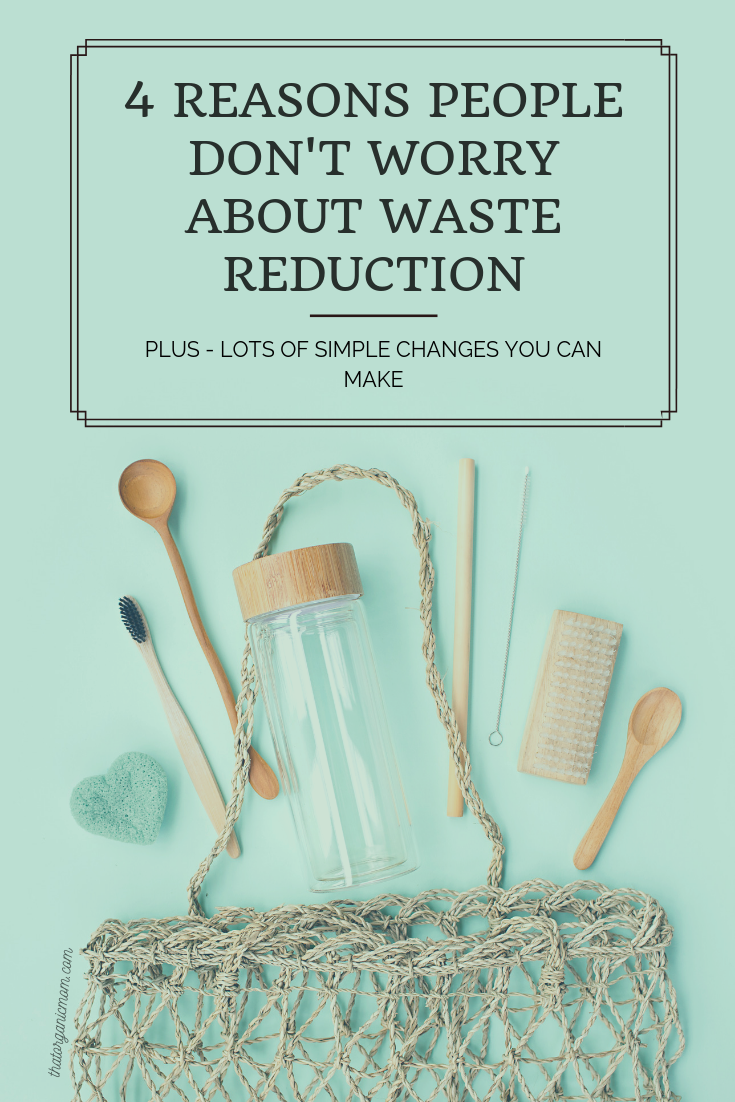
sources:
1 – “United States : Sustainability of U.S. Cities Held Back by Transportation, Environmental Factors, Says New Index.” MENA Report, Albawaba (London) Ltd., Feb. 2015, p. n/a.
2 – Why Is It Difficult to Get Christians to Care About the Earth
https://sojo.net/articles/why-it-difficult-get-christians-care-about-earth
3 –https://www.psychologytoday.com/us/blog/being-green/201208/invisible-problems
4 –https://www.nationalgeographic.org/encyclopedia/great-pacific-garbage-patch/
5 – http://www.seeturtles.org/sea-turtle-diet/
http://www.seeturtles.org/ocean-plastic
https://www.worldanimalprotection.us.org/news/how-plastic-pollution-affecting-seals-and-other-marine-life
6- https://www.ncbi.nlm.nih.gov/pmc/articles/PMC3791860/
7 – https://greatist.com/health/why-you-should-never-buy-disposable-water-bottles-again
Further Reading about Waste Reduction, Minimalism, Decluttering and Living with Less:
https://sojo.net/articles/5-stupid-reasons-christians-reject-environmentalism
http://www.becomingminimalist.com/why-fewer-toys-will-actually-benefit-your-kids/
Slow the Inflow of Noise and Stuff: https://bemorewithless.com/
A Guide to Living with Less Clothing (a personal goal): http://www.becomingminimalist.com/a-practical-guide-to-owning-fewer-clothes/
8 Reasons Successful People Are Choosing To Wear The Same Thing Every Day: http://www.becomingminimalist.com/wear-one/
Don't Just Declutter De-Own: http://www.becomingminimalist.com/dont-just-declutter-de-own/
10 Things to Add to a Simple Life: https://bemorewithless.com/10-things-add-simple-life/
Photo sources
Sky Photo by Noah Silliman on Unsplash

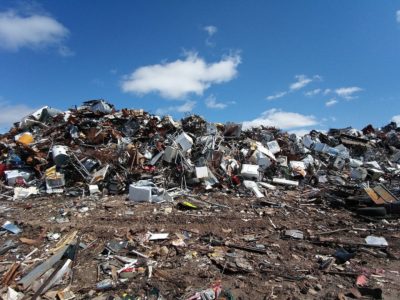
 Avocado, Goat Cheese and Bacon Crustless Quiche – Low Carb and Keto Friendly
Avocado, Goat Cheese and Bacon Crustless Quiche – Low Carb and Keto Friendly
Leave a Reply
You must be logged in to post a comment.